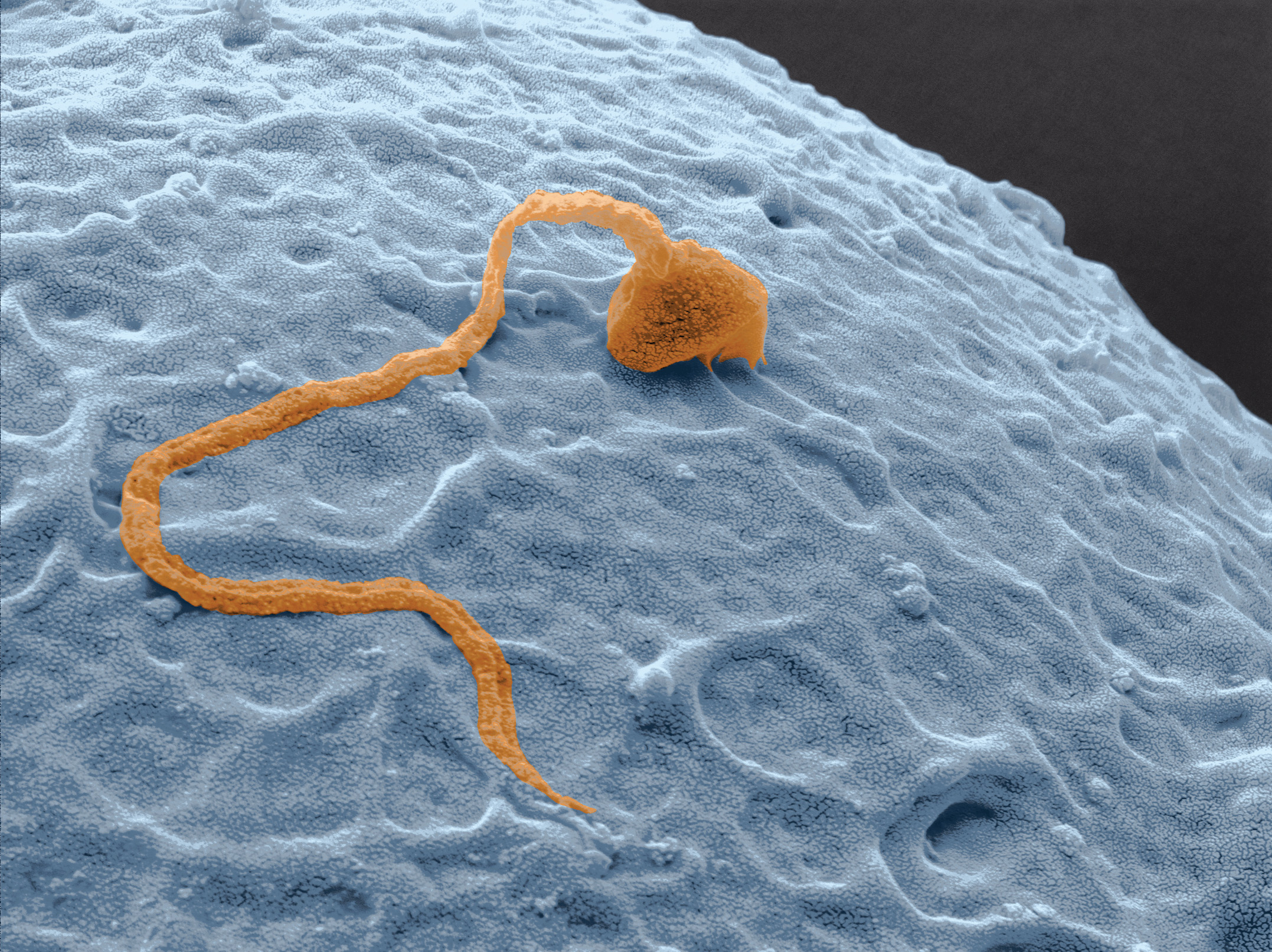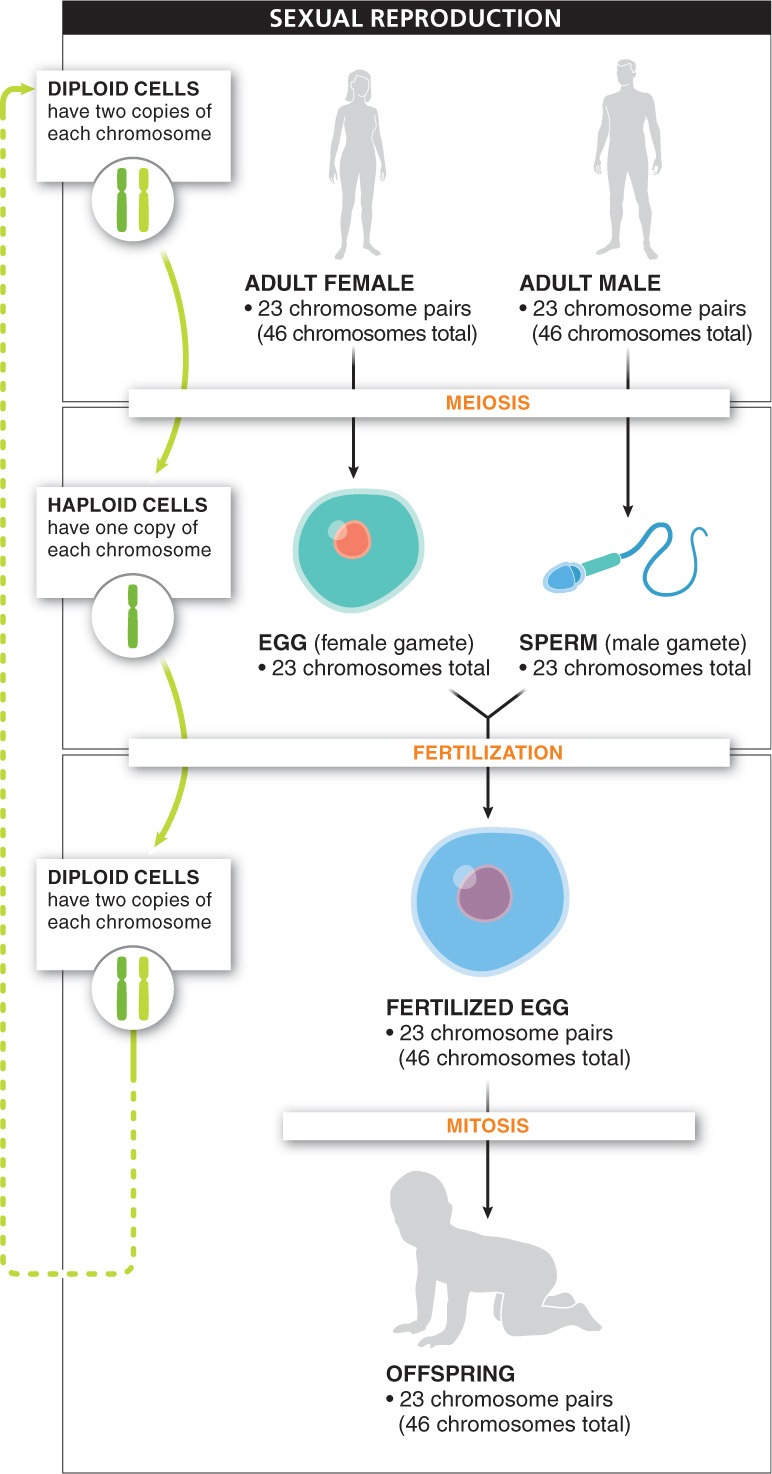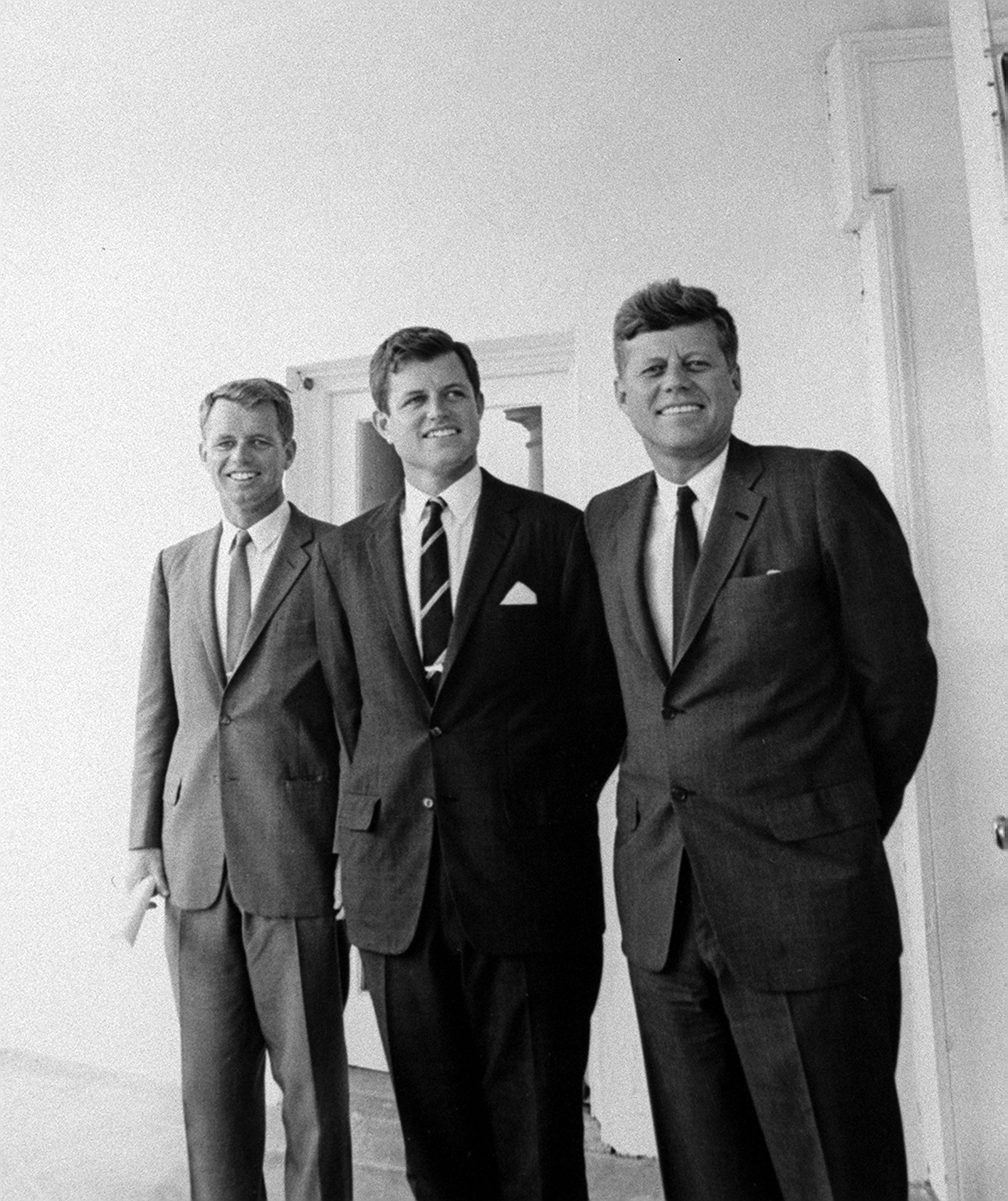
There are two ways in which an organism can reproduce. Many organisms, including bacteria, fungi, and even some plants and animals, undergo asexual reproduction, in which a single parent produces identical offspring. Other organisms, including most animals and plants, undergo sexual reproduction, in which offspring are produced by the fusion of two reproductive cells in the process of fertilization. And some species, particularly among plants, can use both methods. In sexual reproduction, because a combination of DNA from two separate individuals is passed on to offspring, the resulting offspring are genetically different from their parents and, for reasons explained later, from one another.
What would happen if sexually reproducing organisms, humans included, produced reproductive cells through mitosis? Both parents would contribute a full set of genes—
In sexually reproducing organisms, a way has evolved to avoid such chromosome overload. The solution is meiosis, a process that enables organisms to make special reproductive cells, the gametes, which have only half as many chromosomes as the rest of the cells in the organism’s body (the somatic cells). In other words, in anticipation of combining one individual’s genome with another’s during fertilization, meiosis reduces each individual’s genome by half in the gametes. In humans, for example, each gamete cell has only one set of 23 chromosomes, rather than two sets.

In genetics, the term diploid refers to cells that have two copies of each chromosome (in humans, two sets of 23 chromosomes, for 46 chromosomes in total), and the term haploid refers to cells that have one copy of each chromosome. Thus, somatic cells are diploid, and gametes, the cells produced in meiosis, are haploid. At fertilization, two haploid cells, each with one set of 23 chromosomes, merge and create a new individual with the proper diploid human genome of 46 chromosomes. And when the time comes to reproduce, this new individual, through meiosis, also will produce haploid gametes that have only a single set of 23 chromosomes. With sexual reproduction, then, diploid organisms produce haploid gametes that fuse at fertilization to restore the diploid state (FIGURE 6-20). In this way, meiosis maintains a stable genome size in a species.
Although there are some variations on this pattern of alternation between the haploid and diploid states, in most cases, multicellular animals produce simple haploid cells for reproduction. And after two of those gametes come together to form a diploid fertilized egg, multiple cell divisions by mitosis again produce a diploid, multicellular animal.
Meiosis achieves more than just a reduction in the amount of genetic material in gametes. As a diploid individual, you have two copies (i.e., two alleles) of every gene in every somatic cell: one from your mother and one from your father. When making haploid cells from cells that are diploid, an individual creates cells that have one allele for each trait rather than two. Which of these two alleles is included in each gamete cannot be predicted.
21
Each egg or sperm is produced with a varied combination of maternal and paternal alleles, so each of the gametes an individual makes carries a unique set of alleles. As a consequence, each offspring inherits a slightly different assemblage of each parent’s alleles. All offspring resemble their parents, yet none resembles them in exactly the same way. This variation among offspring can be seen among the five Jackson brothers in the photo that opens this chapter (and among the Kennedy brothers in FIGURE 6-21).

In all, then, meiosis has two important outcomes:
- 1. It reduces the amount of genetic material in gametes.
- 2. It produces gametes that differ from one another with respect to the combinations of alleles they carry.
In the next sections, we examine the exact steps that lead to these outcomes and investigate the consequences of all the variation that meiosis and sexual reproduction can generate.
TAKE-HOME MESSAGE 6.9
Meiosis is the process by which reproductive cells are produced in sexually reproducing organisms. It results in gametes that have only half as much genetic material as the parent cell and that differ from one another in the combinations of alleles they carry.
Why do sexually reproducing organisms need to undergo meiosis when they produce gametes?
Offspring produced by sexual reproduction receive chromosomes from two, separate individuals; therefore, these two, separate individuals must be able to produce cells that have half as many chromosomes as the rest of their cells. When these cells, called gametes, combine during fertilization, the full number of chromosomes is restored.
22